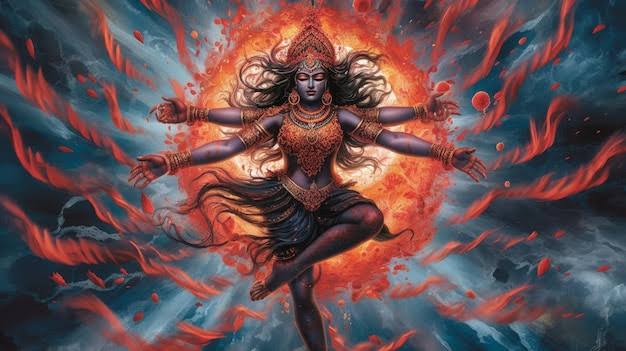Dussehra, a prominent festival celebrated across India, commemorates the triumph of goddess Durga over the demon Mahishasur. Hinduism distinguishes itself among religions by its reverence for feminine deities. The devotees of Shakti, also known as the Shakt Sampraday, view the divine feminine as the driving force behind all life. This goddess embodies the essence of nature, representing life, procreation, love, and energy. Shakti, the feminine force, holds a place of utmost significance in religious texts.
While the Absolute is often seen as undifferentiated and beyond definition, the creation of the cosmos is believed to result from the interplay of two forces: Shiva and Shakti. The ‘Ardhanareshvar’ form of the Divine emphasizes the importance of both the masculine and feminine aspects. Civilizations throughout history have worshipped the Mother Goddess in diverse forms, reflecting the diversity of India’s different regions.
In Hinduism, philosophy and ritual traditions are intricately intertwined. Various goddesses personify different ideas and aspects of nature.
In the Konkan and Goa region, a rich tradition of worshipping the Mother Goddess has thrived for centuries. Santeri, Sateri, or Mauli, worshipped in the form of ant hills or Rohin, symbolizes fertility and the life that springs from the earth. These deities represent the Mother Earth and its divine aspects. The worship of the Mother Goddess as the central deity in village culture is a common feature in most Goan villages, transcending caste and tribe
Historically, people in Goa and Konkan worshipped various elements of nature, recognizing the earth’s generosity in providing food. The tradition of ant-hill worship, prevalent on the West coast of India, symbolizes respect for the earth’s creative and fertile powers. With time, stone sculptures have replaced the ant hills, but the essence of the Divine Mother’s presence endures, emphasizing that the divine transcends form and resides in faith and worship.
The worship of the Mother Goddess takes center stage throughout Konkan and Goa. It is closely linked to fertility and good crops, reflecting the ancient roots of civilization. The worship of Vandevi in protected forest lands known as Devrais signifies the reverence for Mother Nature. Even today, these Devrais continue to exist due to unwavering faith in the Divine.
Hinduism reveres the Divine Trinity – Brahma, Vishnu, and Mahadev, represented with their female counterparts Saraswati, Laxmi, and Parvati. The religion celebrates the Goddess as the giver of life, abundance, fertility, valour, bravery, and intelligence. In classical Hindu texts, women held roles as preceptors and warriors, highlighting the elevated status of the feminine. While Goddess Laxmi symbolizes wealth and abundance, Goddess Saraswati bestows knowledge and wisdom, and Parvati, the Goddess of war, strength, and fertility.
While the Absolute is embodied as Divine Justice in the male trinity, their female counterparts represent its aspect of Divine Mercy.
Navratri’s symbolism in the religious texts underscores the importance of the Divine Goddess, who defeats the tyrant Asur King Mahishasur, establishing law and order. Throughout history, saints and mystics have worshipped the Divine Mother, embodying archetypal female qualities like insight, receptivity, acceptance, surrender, and empathy. The Divine is not confined to a gender or seen as inferior; it resides in every compassionate thought and virtuous act. Durga represents virtue and reason, found in the care of a mother, the sacrifices of women, and the achievements of females in all walks of life. This Navratri, let us celebrate the Divine Shakti present in every woman.



